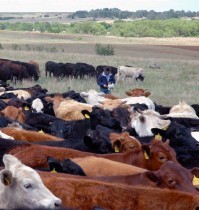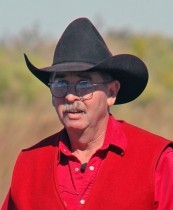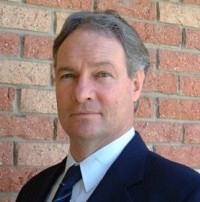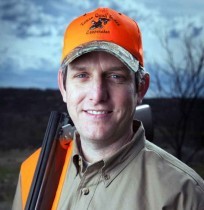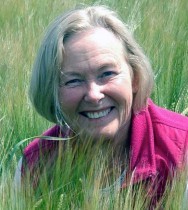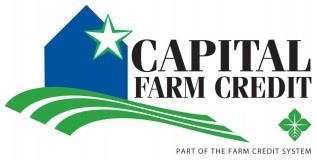Abilene has earned another “Top 25” honor.
Pheasant Forever has named Abilene as one of the top 25 bird hunting towns in America.
“Last year’s list of the 25 Best Pheasant Hunting Towns in America selected locales predominately based in the Midwest where the ringneck is king,” it said in its on-line blog at www.pheasantsforever.org. “Because Pheasants Forever & Quail Forever members hail from all reaches of the United States, from Alabama to Alaska, we’ve assembled this year’s list to include pheasants as well as multiple quail species, prairie grouse and even forest birds.
“The main criterion was to emphasize areas capable of providing multiple species, along with destinations most-welcoming to bird hunters. In other words, there were bonus points awarded for “mixed bag” opportunities and neon signs “welcoming bird hunters” in this year’s analysis. We also avoided re-listing last year’s 25 towns, so what you now have is a good bucket list of 50 destinations for the traveling wingshooter!”
Abilene was recently named one of the best small towns to visit by The Smithsonian.
Abilene was selected for its abundance of quail.
Here is the Pheasant’s Forever list of top bird hunting locations:
1. Pierre, South Dakota. This Missouri River town puts you in the heart of pheasant country, but the upland fun doesn’t stop there.
2. Lewistown, Montana. Located in the geographic center of the state, Lewistown is the perfect city to home base a public land upland bird hunt.
3. Hettinger, North Dakota. Disregard state lines and you can’t tell the difference between southwest North Dakota and the best locales in South Dakota. Hettinger gets the nod in this region because of a few more Private Land Open to Sportsmen (P.L.O.T.S.) areas.
4. Huron, South Dakota. Home to the “World’s Largest Pheasant,” Huron is also home to some darn good pheasant hunting. From state Game Production Areas to federal Waterfowl Production Areas to a mix of walk-in lands, there’s enough public land in the region to never hunt the same area twice on a 5 or 10-day trip, unless of course you find a honey hole.
5. Valentine, Nebraska. One of the most unique areas in the United States, the nearly 20,000 square mile Nebraska Sandhills region is an outdoor paradise, and Valentine, which rests at the northern edge of the Sandhills, was named one of the best ten wilderness towns and cities by National Geographic Adventure magazine in 2007. Because the Sandhills are 95 percent grassland, it remains one of the most vital areas for greater prairie chickens and sharp-tailed grouse in the country.
6. White Bird, Idaho. Hells Canyon is 8,000 feet of elevation, and at various levels includes pheasants, quail, gray partridge and forest grouse. Show up in shape and plan the right route up and down, and you may encounter many of these species in one day
7. Heppner, Oregon. Nestled in the Columbia Basin, within a half-hour drive hunters have the opportunity to harvest pheasants, California quail, Huns, chukar, and in the nearby Blue Mountains, Dusky grouse, ruffed grouse and at least the chance of running into mountain quail.
8. Winnemucca, Nevada. Winnemucca claims legendary status as the “Chukar Captial of the Country.” Long seasons (first Saturday in October through January 31), liberal bag limits (daily limit of six; possession limit of 18) and the fact that these birds are found almost exclusively on public land make chukar Nevada’s most popular game bird.
9. Albany, Georgia. Buoyed by tradition and cemented with a local culture built upon the local quail plantation economy, Albany has a reputation as the “quail hunting capital of the world” and a citizenry that embraces “Gentleman Bob.”
10. Milaca, Minnesota. There are places in Minnesota where pheasants can be found in greater abundance, ditto for ruffed grouse. But there are few places where a hunter may encounter both in such close proximity.
11. Sonoita, Arizona. Central in Arizona’s quail triangle – the Patagonia/Sonoita/Elgin tri-city area – the crossroads of U.S. Highways 82 and 83 puts you in the epicenter of Mearns’ quail country, and 90 percent of the world’s Mearns’ hunting takes place in Arizona.
12. Abilene, Kansas. A gateway to the Flint Hills to the north and central Kansas to the west, the two areas in recent years that have produced the best quail hunting in the Sunflower State.
13. Eureka, South Dakota. Legend has it the town’s name stems from the first settler’s reaction to all the pheasants observed in the area – “Eureka!”
14. Wing, North Dakota. Located just northeast of Bismarck, this town’s name is a clear indication of its premiere attraction. While primarily a waterfowler’s paradise, bird hunters looking to keep their boots dry can find pheasants, sharp-tailed grouse and Huns on ample public ground.
15. Redfield, South Dakota. By law, there can only be one officially trademarked “Pheasant Capital of the World” and Redfield is the owner of that distinction . . . and for good reason!
